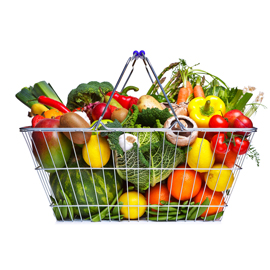
After a couple of months you’ll be ready to move on to Stage IV, the soft food diet. While your foods no longer need to be pureed to the point of being able to be sucked through a straw, you still want to focus on non-irritating, low-residue foods. Because you’re no longer pureeing your food, make a special effort to ensure that you chew all foods thoroughly. At this point, you’re starting to move toward a more regular diet that should include a variety of foods and good sources of protein at every meal.
While many of the foods that were acceptable during Stage III are acceptable now, there are some changes to consider as you move away from liquids toward a more healthy, balanced soft food diet.
New dietary guidelines for Stage IV soft food diet include:
- Meats: You no longer need to puree your meat, but you should still trim any visible fat and remove all of the skin from poultry. You should continue to bake, broil, or steam your meats.
- Cheese: While you can still have soft cheeses and cheese dips, these should be eaten in moderation now.
- Soups and sauces: It’s important to continue avoiding tomato, bean, and French onion soups, as these can cause acid reflux.
- Cereal: You can now have dry cereals with low-fat or skim milk. Focus on high-fiber cereals, such as Bran Flakes, Grapenuts, Wheaties, or Raisin Bran. Remember to chew thoroughly.
- Bread: You may start to introduce high-fiber breads like whole wheat, rye, and Boston brown bread. You can also have high-fiber muffins and high-fiber, whole-grain crackers. You may want to limit yourself to half a slice and try toasting the bread for easier swallowing. You should still avoid low-fiber breads, bagels, English muffins, corn bread, dinner rolls, hamburger and hot dog buns, saltine crackers, bread sticks, croutons, and pretzels.
- Other starches: Instead of mashed white potatoes, which are low in fiber and can pass easily through the gastric band, you should have baked or broiled sweet potatoes. You can also have barley, whole-wheat pasta, and brown rice.
- Vegetables: You should now focus on eating high-fiber vegetables. Avoid vegetables like beets, carrots, and onions.
- Fruits: While you stayed away from high-fiber fruits during Stage III, in Stage IV you should focus on eating more of those fruits, including avocados, berries, cantaloupe, and citrus fruits. Avoid very soft fruits that can pass through the band without chewing, such as soft bananas and applesauce.
Understand that at this point, your slleve has had a chance to heal and you should feel full after eating a limited amount of food. Paying attention to this restriction is what will help you lose weight. Avoid soft foods and liquid calories that will bypass this restriction and sabotage your weight loss goals.


